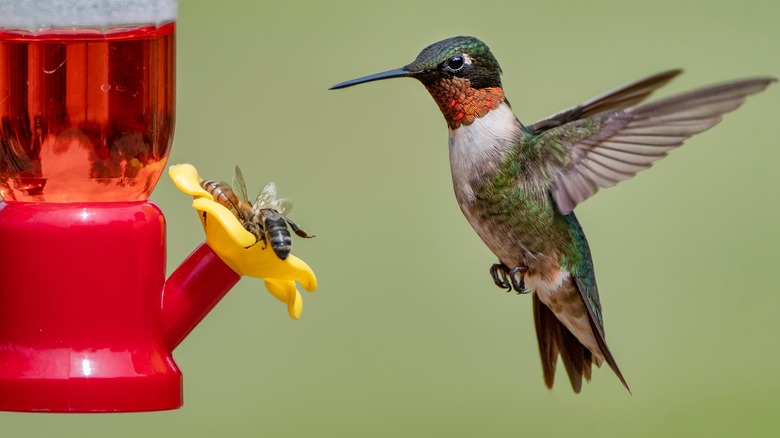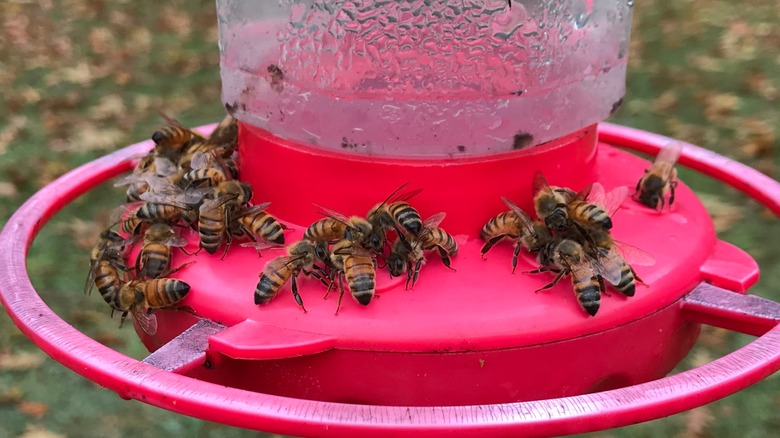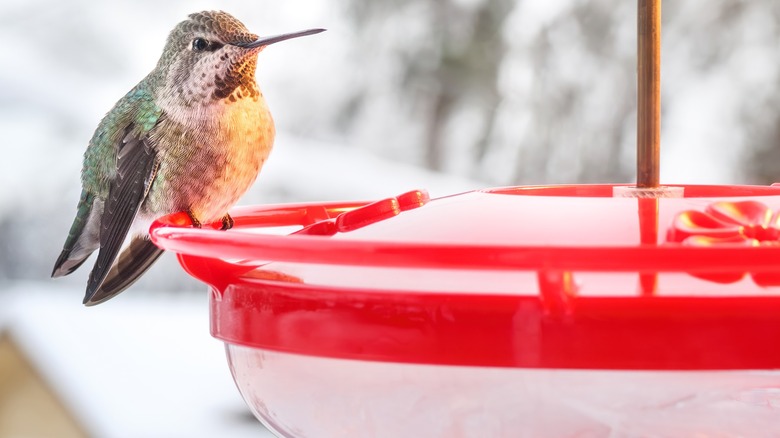Do Hummingbirds Prey On Bees And Wasps? Here's What You Need To Know
If you've spotted hummingbirds near bees or wasps, you might wonder if these birds consider such insects as prey. Hummingbirds primarily eat nectar from a variety of sources. Not only can a clean hummingbird feeder attract these fascinating creatures, but they also feast on nectar from a variety of flowering plants. In fact, the Adirondack Council estimates that hummingbirds visit somewhere between 1,000 and 2,000 flowers every day to help them regain the large number of calories burnt off during their rapid flights.
The average hummingbird diet is split pretty evenly between nectar and small bugs. While hummingbirds purportedly might chomp on the occasional bee or wasp, these flying insects aren't considered a typical part of their regular eating schedule. If you do spot a hummingbird seemingly preying on wasps or bees, chances are that it's accidental due to the fact all three species feast on nectar and are probably competing for food.
Larger bird species are more likely to eat wasps and bees than hummingbirds
Hummingbirds eat bugs as a key part of their diets, but they don't actively prey on bees and wasps. Instead, they generally opt for much smaller critters such as mosquitoes, gnats, aphids, mites, and spiders. An occasional smaller bee might also be among them. Up to 60% of a hummingbird diet consists of these types of bugs during nesting season due to increased protein, fat, and micronutrient needs. In fact, some people purposely attract hummingbirds to their yards as a natural means of helping with insect control.
While hummingbirds may consider certain flying insects as competition for feasting on their favorite flowers, bees and wasps typically have more to worry about than these tiny birds. Certain types of larger birds actually consider these bigger flying insects as sources of food, and will try to prey on them in your yard or garden. For example, bluebirds, chickadees, crows, orioles, and sparrows are likely to eat wasps for protein, while summer tanagers eat both wasps and bees. Common barn swallows also eat bees and wasps.
Bees and wasps may still pose problems for hummingbirds
Hummingbirds don't actively target bees or wasps when they're trying to get food, even though they do end up competing with them quite often. There's also likely little you can do to keep all three of these types of pollinating species away from each other if they're targeting the same plants. However, you can help reduce the number of bees and wasps that may try to access nectar from hummingbird feeders as a way to support these birds.
One way to keep bees away from a hummingbird feeder is to avoid yellow colors that they may be attracted to, and to make sure the feeder isn't leaking any nectar. You can also move your feeder periodically by just a few feet, which confuses insects but still allows hummingbirds to find the nectar they seek. Finally, consider swapping out traditionally large cylinder-style feeders for saucer versions, which reduces accessibility to bees and wasps.


